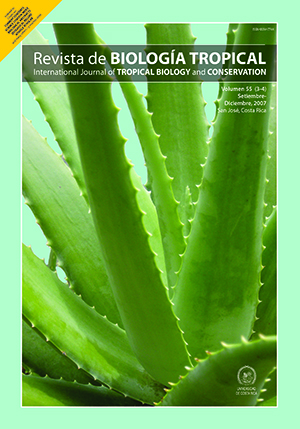Resumen
The diversity and load of heterotrophic bacteria and fungi associated with the mangrove soil from Suva, Fiji Islands, was determined by using the plate count method. The ability of the bacterial isolates to produce various hydrolytic enzymes such as amylase, gelatinase and lipase were determined using the plate assay. The heterotrophic bacterial load was considerably higher than the fungal load. There was a predominance of the gram positive genus, Bacillus. Other genera encountered included Staphylococcus, Micrococcus, Listeria and Vibrio. Their effectiveness on the degradation of commercial polythene carry bags made of high density polyethylene (HDPE) and low density polyethylene (LDPE) was studied over a period of eight weeks in the laboratory. Biodegradation was measured in terms of mean weight loss, which was nearly 5 % after a period of eight weeks. There was a significant increase in the bacterial load of the soil attached to class 2 (HDPE) polythene. After eight weeks of submergence in mangrove soil, soil attached to class 1 and class 3 polythene mostly had Bacillus (Staphylococcus predominated in class 2 polythene). While most of the isolates were capable of producing hydrolytic enzymes such as amylase and gelatinase, lipolytic activity was low. Class 2 HDPE suffered the greatest biodegradation.Comentarios

Esta obra está bajo una licencia internacional Creative Commons Atribución 4.0.
Derechos de autor 2007 Revista de Biología Tropical
Descargas
Los datos de descargas todavía no están disponibles.






